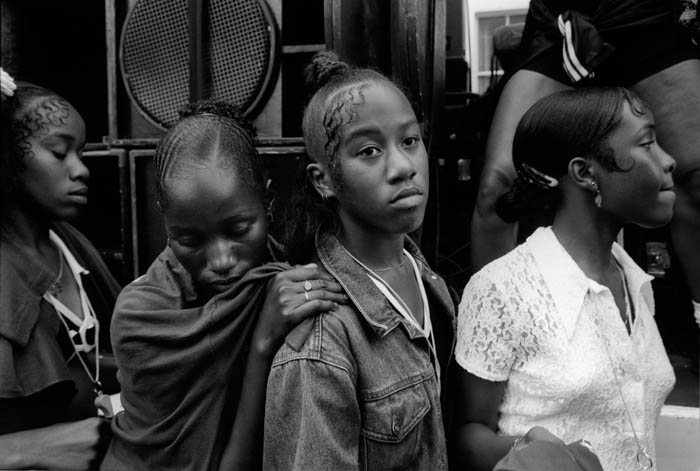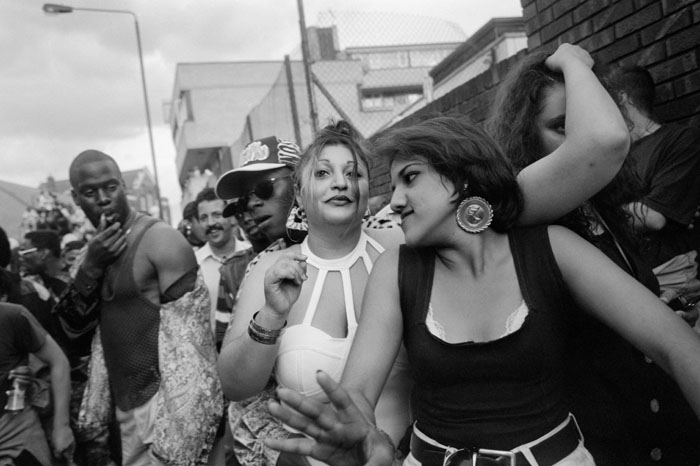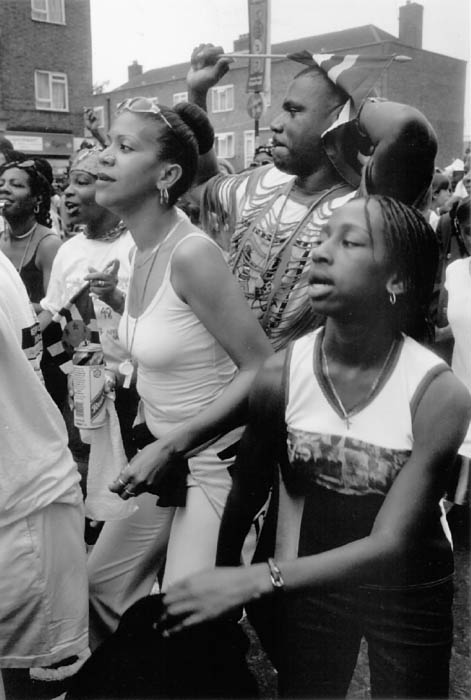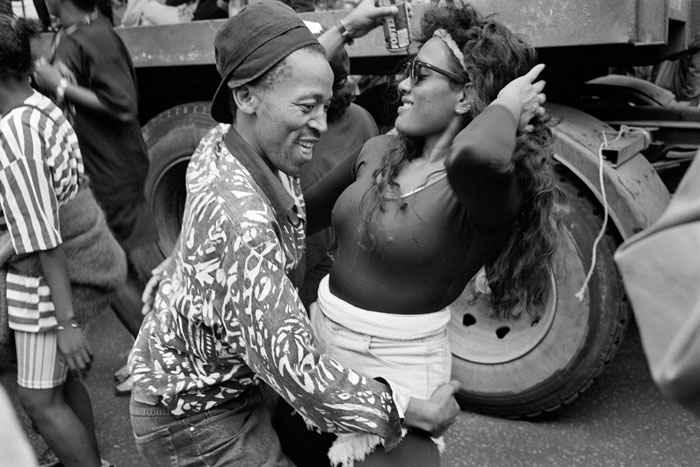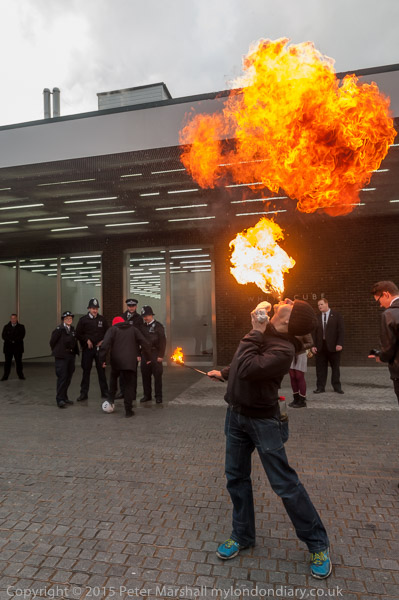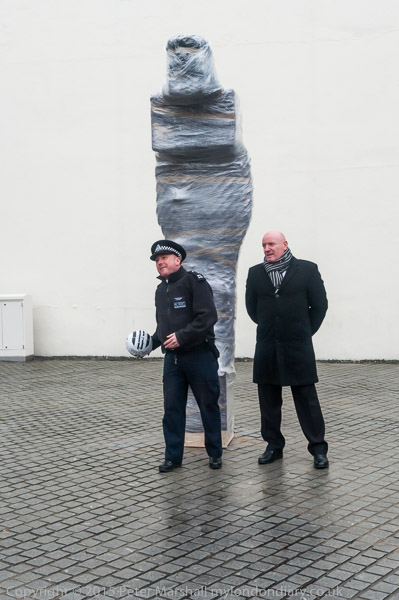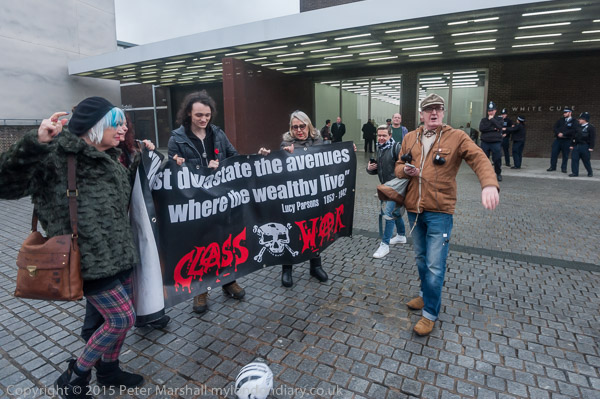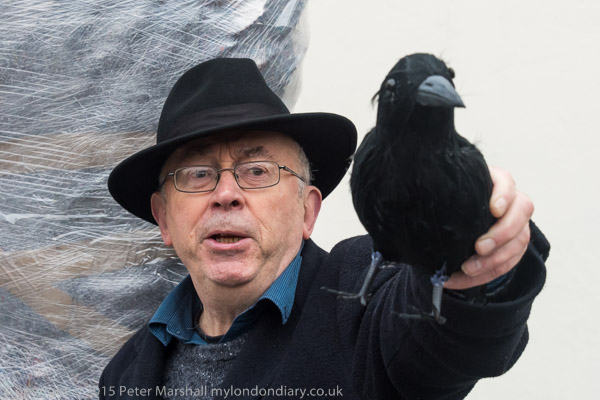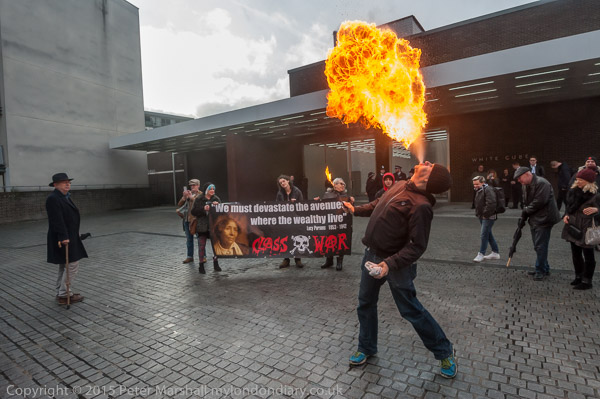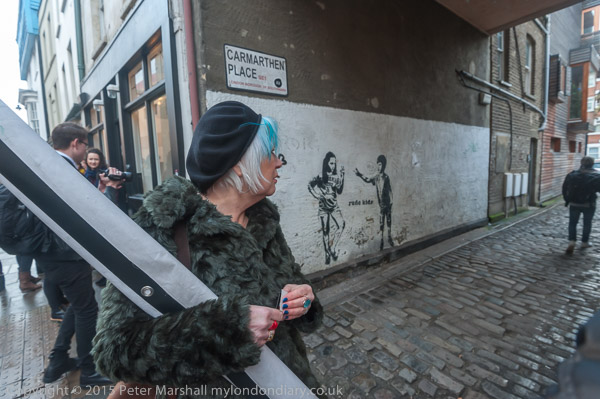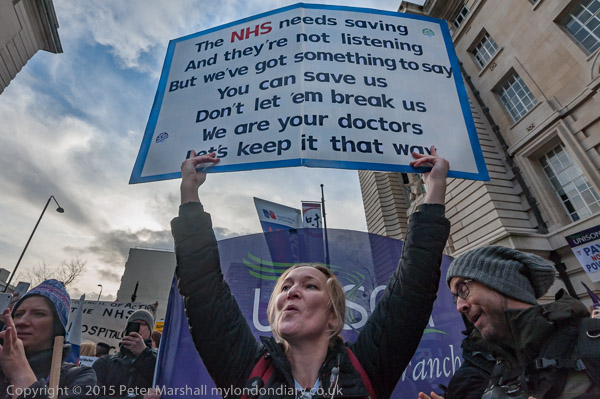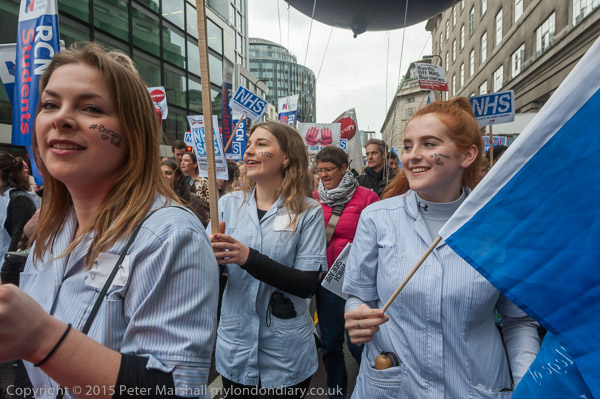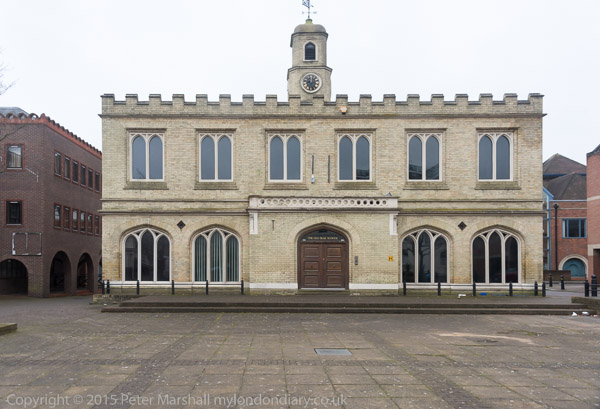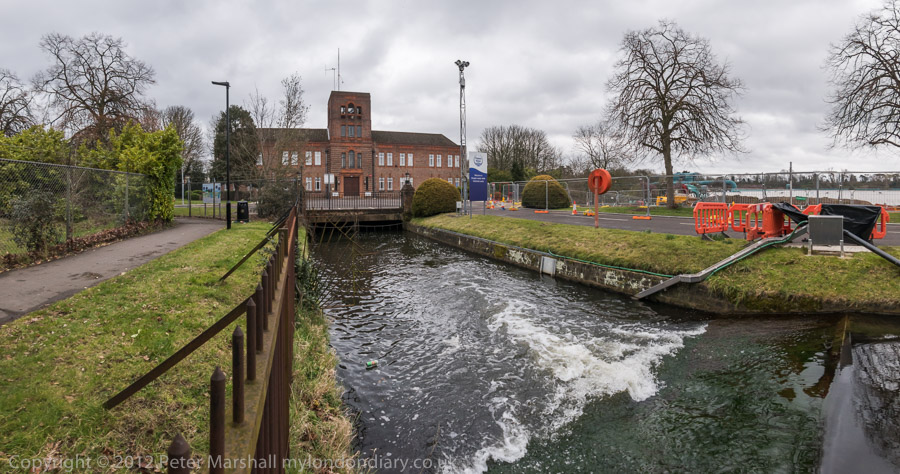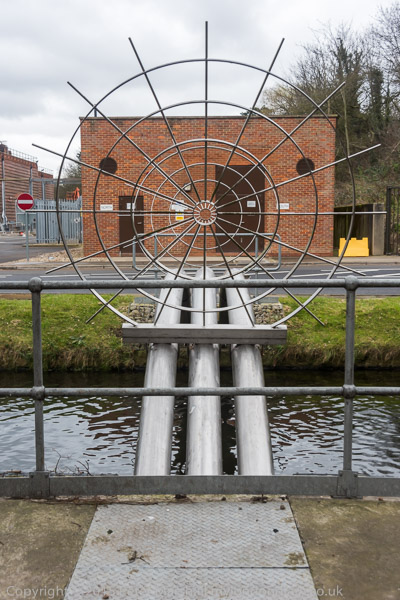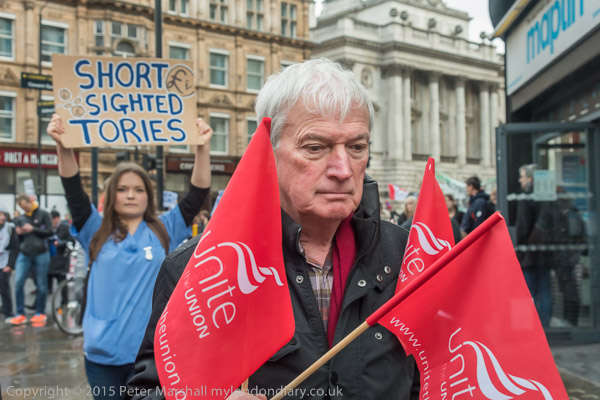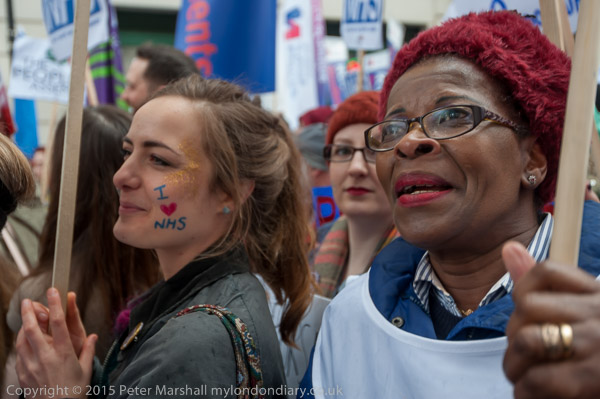Everyone will know at least one image by Marc Riboud, even if his name will be less familar outside of photographic circles. He took the truly iconic image of protest against the Vietnam war, 17 year-old high school student Jan Rose Kasmir holding up a chrysanthemum in front of a line of young soldiers with fixed bayonets stopping the protesters from reaching the Pentagon October 21, 1967. Apart from that, he is best known for his extensive work in the Far East, particularly Vietnam and China, though he photographed around the world, including here in the UK.
Back in 1954, the year after he gave up work as an engineer in a Lyon factory to become a full-time freelance, when Riboud was a young photographer unknown in the UK, his mentor, Robert Capa, who had sent him to London to learn English, came to visit him. Len Spooner, the editor of Picture Post, came into the hotel bar where they were drinking and Capa twisted his arm to give the young photographer a job. The magazine had just completed a series on ‘the best and worst of British Cities’ bu nne of their photographers had wanted to go to Leeds, all thinking it was too depressing. Capa told him that as Riboud came from Lyon, a manufacturing city like Leeds, he was just the man for the job, and Riboud spent three weeks photographing there.
But when Riboud arrived back in London to hand in his pictures, he was met with the news that Capa was dead – and he felt utterly devastated, as he says “like an orphan” and forgot about everything including the pictures he had taken.
A video tells the story of how these pictures, some not even developed, were rediscovered almost 50 years later in a London lab and then became the subject of a project and exhibition in the much changed city where they were taken. As well as in the film, some of the Leeds pictures are on the Magnum website and on his own web site, Mark Riboud – 60 Years of Photography.
Riboud’s explanation of why these pictures were forgotten came in an interview for a video around 50 years after the event, and while it undoubtedly expresses his recollection and feelings, it fails to account for the practicalities. Though the death of Capa (and also that of Werner Bischof, killed in Peru 9 days earlier, the news of whose death reached Magnum’s offices the very same day) shocked the photographic community, but would not have prevented Spooner from getting Picture Posts’s rolls of film from the photographer they had commissioned for an extensive assignment in the Spring of 1954.
Riboud, interviewed in by Russell Miller for his 1997 book ‘Magnum – 50 years at the front line of history’, states he met Capa in London two months after being given the Leeds job (and presumably well after its completion), shortly before Capa left for Japan and the fatal trip to Indochina and late in May. I have no inside information, but it seems most likely that Spooner had the lab develop one or two rolls from the Leeds assignment and seeing them decided to spike the story, storing the rest of the rolls – which the magazine would have owned – in case the story seemed significant at a later date.
Riboud joined Magnum at the start of his professional career in 1953 and they continue to represent him and have a large collection of images, from early work – including many pictures of London and elsewhere in the UK up until 2006. You can also see his work on many other sites across the web, including Lensculture, American Suburb X and ICP, and there are a number of obituaries already on the web, with more appearing as I write.
Riboud’s family were one of the leading families in Lyon, and his older brothers became well-known in various fields; Antoine was one of the two founders of Danone, Jean became chairman of Schlumberger and Jacques a town planner. Marc took his first photographs with a Kodak Vest Pocket camera that was a birthday present from his father when he was 14. Although after the war (when he was active in the Resistance) he took an engineering degree and went to work as a factory engineer, he soon found his heart was not in the job, and lived for the weekends when he could get out and take pictures.
A chance connection through one of his brothers who had been nursed after being liberated from Buchenwald by Henri Cartier-Bresson’s sister had led to a brief meeting with the photographer, and when he decided he was ready to become a full-time photographer, he jumped on a train to Paris and went to the photographer’s flat – only to be told HC-B was away for six months. He went back again six months later and showed his pictures, and was advised not to leave his profession as an engineer, as photography was such an insecure living.
Despite this, a few months later Riboud decided to leave the factory and went again to Paris, this time searching out another of Magnum’s founders, Robert Capa. It took considerable persistence to find the man, but when he did, Capa looked through his pictures and told him ‘OK’ and he was in Magnum. Things were very different back then.
Marc Riboud died 30 August 2016 following a long illness.
